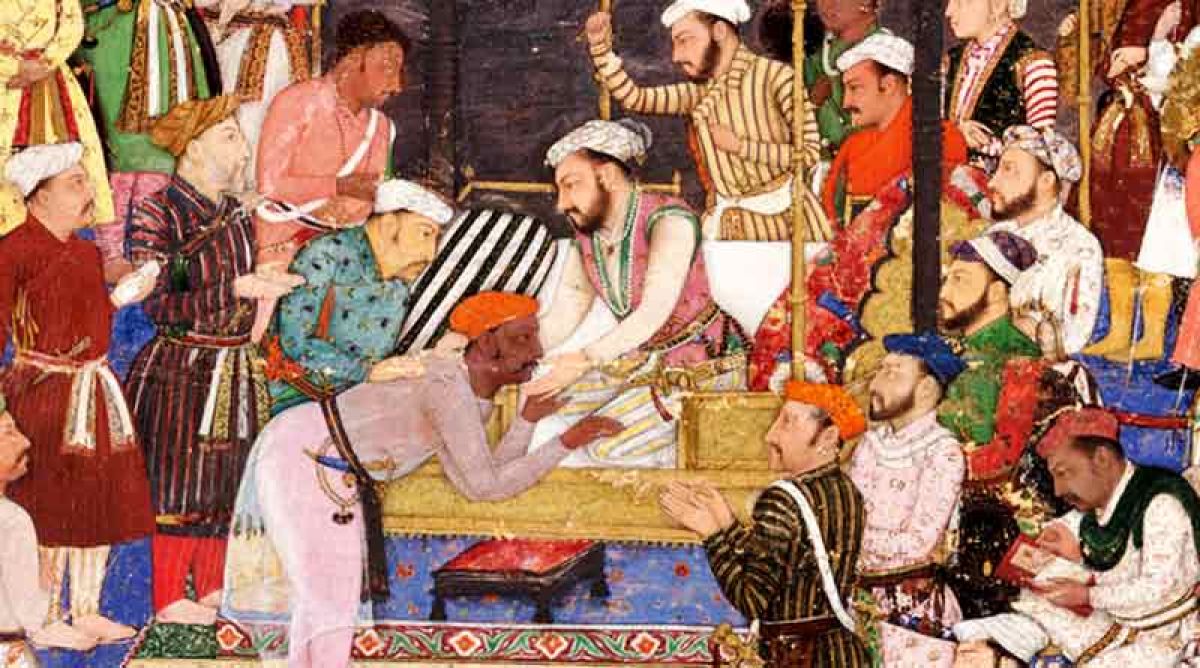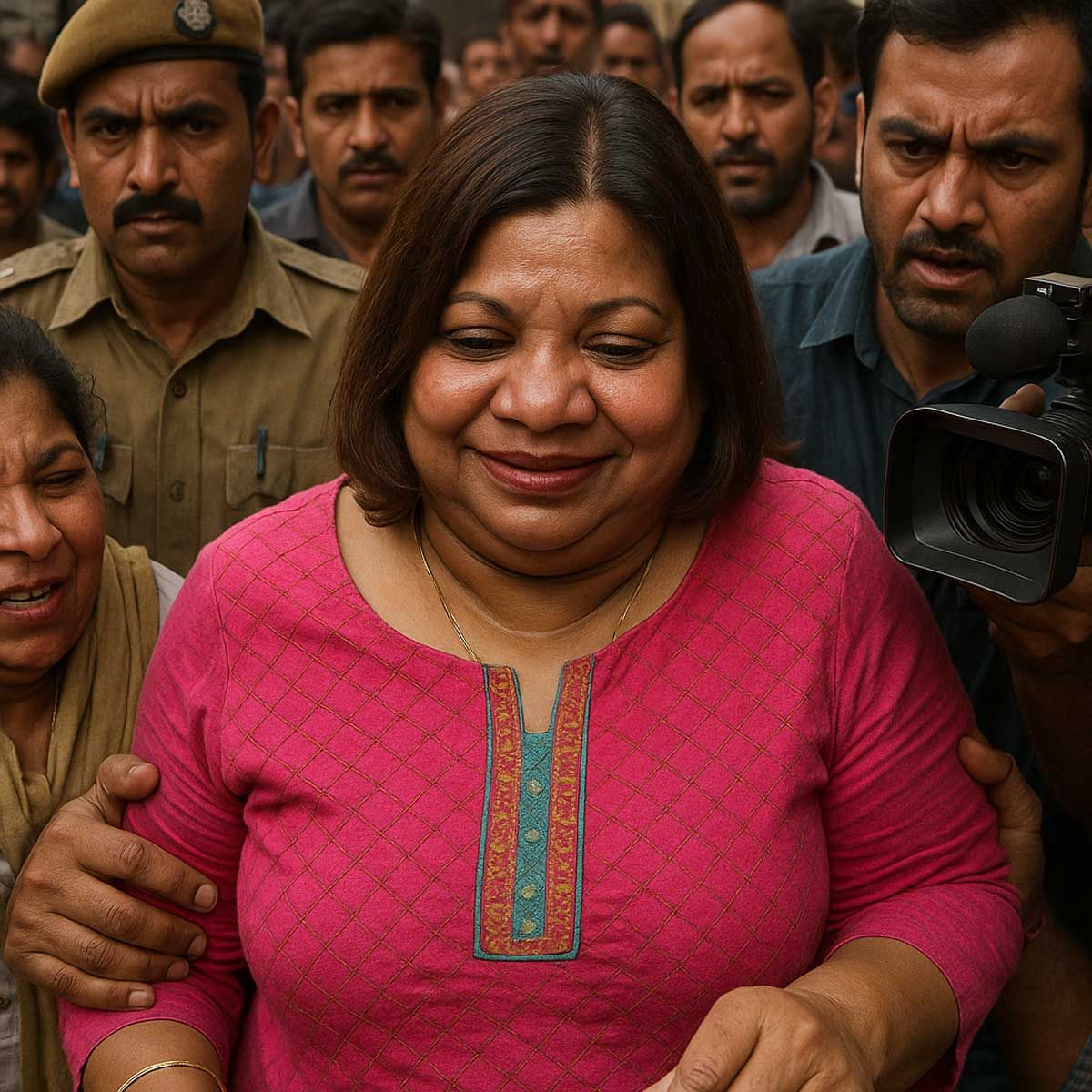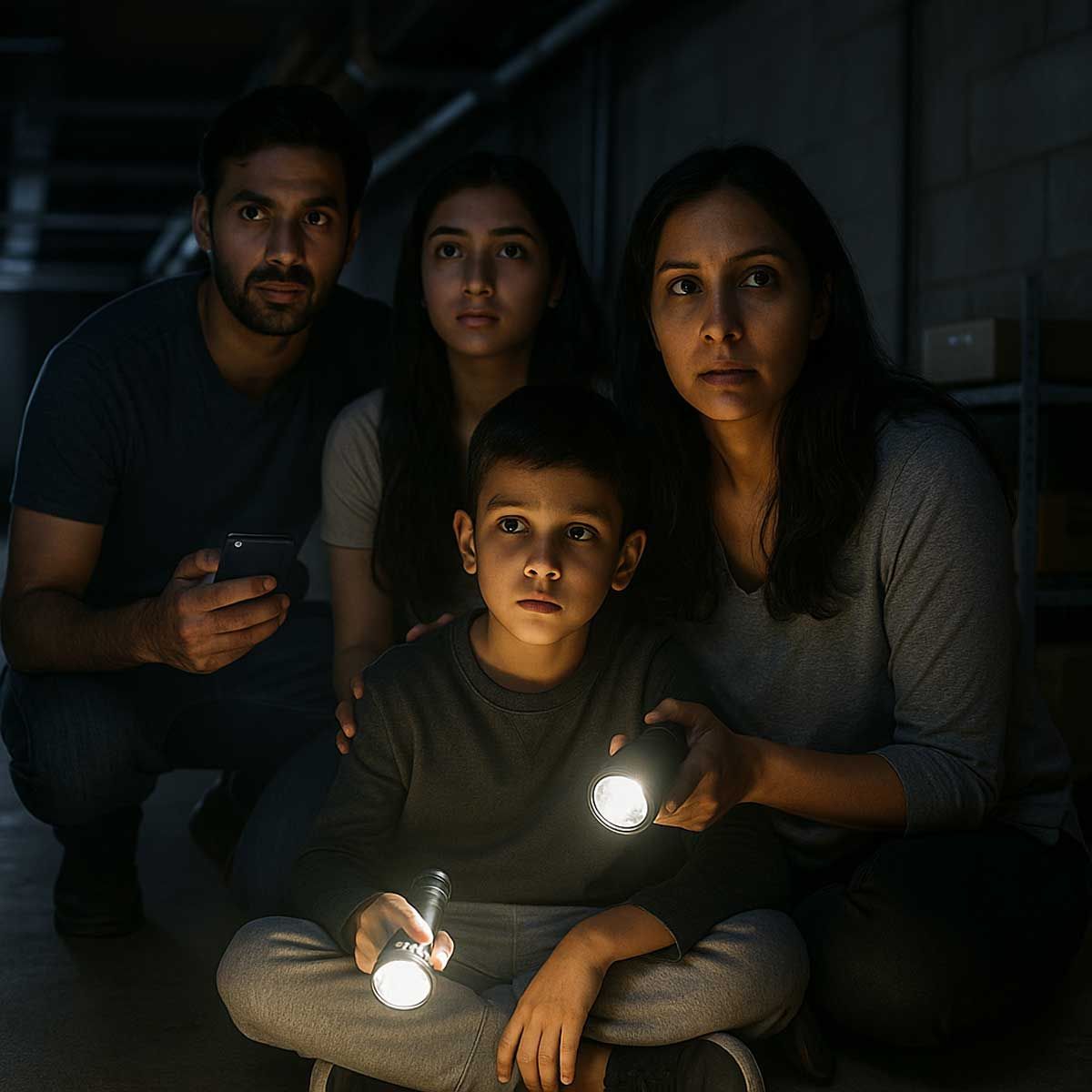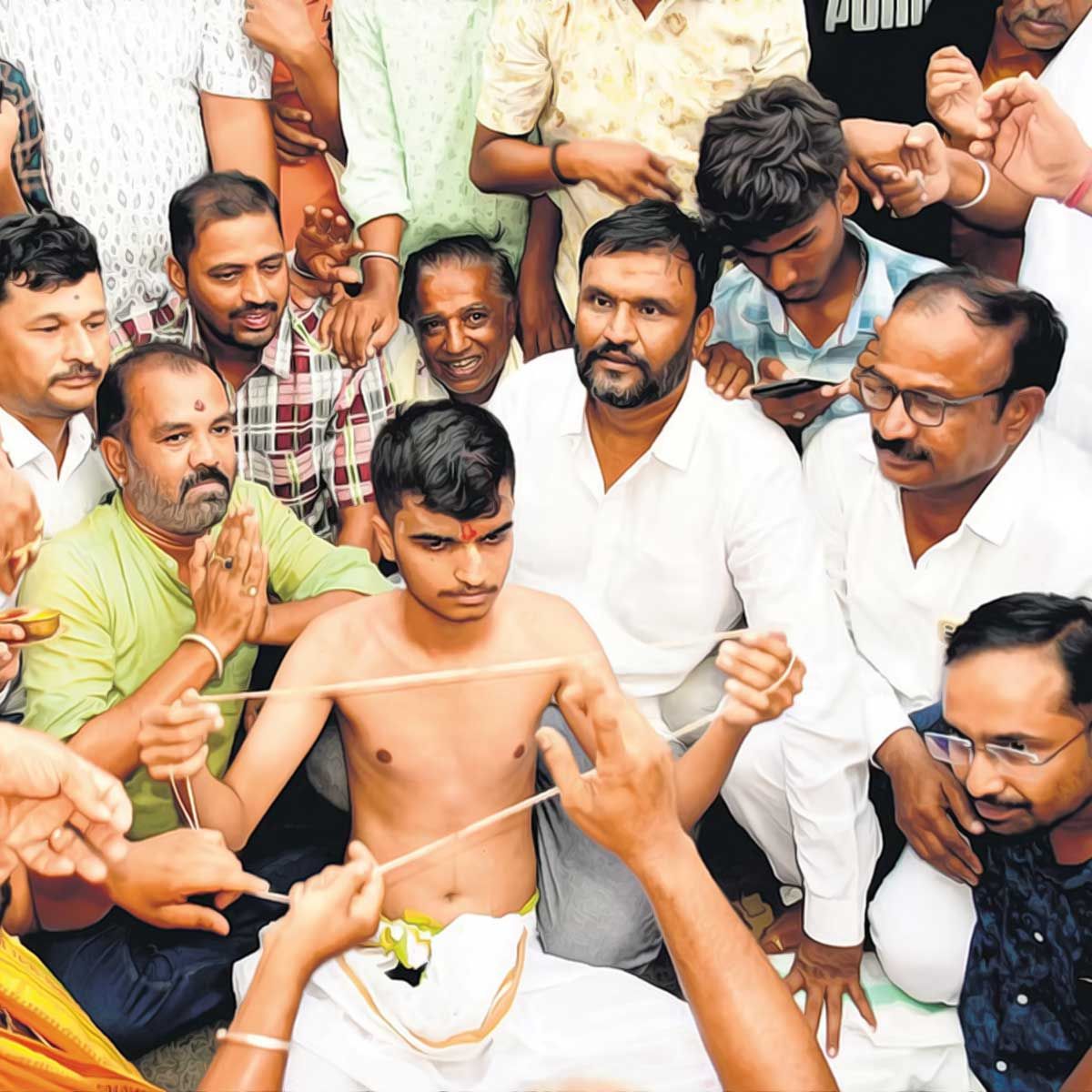More Coverage
Twitter Coverage
Satyaagrah
Written on
Satyaagrah
Written on
Satyaagrah
Written on
Satyaagrah
Written on
Satyaagrah
Written on
JOIN SATYAAGRAH SOCIAL MEDIA
Is @NCERT School Book Committee Selling Islam In The Guise Of History since decades?

Recently, we have witnessed growing outrage against NCERT because of using vulgar language in small classes where parents are stating that such kind of language with harm their kids. There are thousand of tweets being posted from all over India with textbook images. Not only NCERT have used vulgar languages but also tried to paint Islam as a religion of peace in comparison to Hinduism and shown Muslim rulers in glorified way ignoring even mention of Indian rulers.
The secularist narrative is being propagated everywhere and inserted into the textbooks of history, including in the projected new textbooks mulled over by the National Council for Educational Research and Training (NCERT). As per the official procedure, there is a provision for feedback from the public.
A school textbook claiming that Mughal rulers had helped build and maintain temples has sparked outrage online. An NCERT history textbook for Class 12 had cited the reigns of Shah Jahan and Aurangzeb to say that even when temples were destroyed during wars, "grants were later issued for their repair". And while this had irked many, the fact that NCERT seems unable to back up the statement has now caused an all-out tweet war.
"This is the biggest fraud with our country unearthed," read a rather dramatic tweet. Many however appear to be unsure about who to hold responsible, with some believing that NCERT is the culprit. With the National Council of Educational Research and Training being an autonomous organization of the government, it appears to be unclear who should be hauled up for the same. But this has not deterred netizens, and others are busy blaming political parties - both the UPA and the NDA.
As the debate continued, an RTI query was filed, seeking the source of the claim published in the textbook. And the widely shared RTI response reveals that the organization does not have any information available for the same in its Department files.
An RTI activist has sent a legal notice to the NCERT and sought to make amendments in the book after the NCERT said that they had no references to the claims in 12th standard books that Mughal emperor Aurangzeb gave grant for repairs of temples.
 |  |
Neither the folks at NCERT, nor the Nehruvian historians, nor their foreign followers, have ever succeeded in finding a Muslim chronicle saying that “the Sultan was inspired by Hindu example to destroy idols and demolish temples”. The point, after all, was not finding fault with what Hindus may have done (though finding fault with Hindus is certainly also on the secularists’ agenda), but to explain through Hindu behavior the known Islamic conduct of iconoclasm. This relation between Islamic iconoclasm and Hindu example has never ever been established. On the contrary, whenever Muslim iconoclasts feel the need to motivate their destructive behavior, they cite Islamic examples, first of all, the destruction of the idols in the Kaaba by Mohammed himself.
And let alone the words in chronicles or elsewhere, it is actual deeds that prove the radical difference between Islamic iconoclasm and any possible Hindu attitude. The NCERT itself quotes a case where a Vishnu statue was abducted, and then installed for worship by the abductor himself. If such were the example followed by Muslim iconoclasts, we would expect to find mosques where Hindu statues from, say, the Somnath temple or the Rama Janmabhumi temple had been installed. Unlike the Nehruvians, we are not provincials and will not confine ourselves to India, so images of Apollo, Osiris, or any other deity will also do. Pray, NCERT, where is that mosque where an abducted idol has been installed for worship? We are not asking for two examples, just one. – Pragyata, 31 March 2017
"Aurangzeb protected more Hindu temples than he destroyed. He employed more Hindus in his imperial administration than any prior Mughal ruler by a fair margin," contended historian Audrey Truschke recently. And with the NCERT controversy adding fuel to an already debated topic, many have focused their ire on her.
"Can't expect better from a historian whose primary source is Wikipedia. Don't throw Western terminological concoctions like ancient, medieval, pre-modern, modern, post-modern which have no relevance to the Orient. Issue is not Aurangzeb's temporality but his genocidal bigotry," tweeted former IPS officer M Nageswara Rao. He followed this up with the NCERT RTI response to back up his comments.
"All NCERT History text books were got written by JNU History department by the UPA 1 - complete Leftist propaganda. Bonfire of these books is long overdue," tweeted retired IAS officer Sanjay Dixit. The RSS-affiliated Shiksha Sanskriti Utthan Nyas has also deposed before a Parliamentary Standing Committee about "distortions" in the NCERT textbooks. The organization had been invited to depose on textbook reforms and to suggest the removal of "un-historical facts and distortions".
On July 29, 2020, Wednesday, the Union Cabinet cleared a new National Education Policy (NEP), one that proposed drastic changes in school and higher education. Union Education Minister Ramesh Pokhriyal ‘Nishank’, while announcing the NEP, described it as the beginning of a new era in the field of education and said it will be uniformly implemented across all Indian schools keeping ‘diversity’ in mind.
| Our Past-II | Class VII Book |
Still, we have not seen any change.. not even a single word. The book ‘Our Pasts-II: Textbook in History for Class VII’ was launched in 2007. Between 2007 and 2017, the book has seen 11 reprints, three under NDA. They, of course, have not changed a single word.
The publication team, according to the information published in the book, was headed by M. Siraj Anwar and chief editor was Shveta Uppal and assistant editor was Arun Chitkara. The book, under the title ‘Old and new religions’ informs kids, the following:
It was during this period that important changes occurred in what we call Hinduism today. These included the worship of new deities, the construction of temples by royalty and the growing importance of Brahmanas, the priests as dominant groups in society. pp.11-2
And the next paragraph emphasizes again:
Their knowledge of Sanskrit texts earned the Brahmanas a lot of respect in society. Their dominant position was consolidated by the support of their patrons — new rulers searching for prestige.
Then, it presents Bhakti in this context:
One of the major developments was the emergence of the idea of bhakti, of a loving personal deity that the devotee could reach without the aid of priests or elaborate rituals.
And after this, Islam gets presented this way:
This was also the period when new religions appeared in the subcontinent. Merchants and migrants first brought the teachings of the holy Quran to India in the seventh century. Muslims regard the Quran as their holy book and accept the sovereignty of the one God, Allah, whose love, mercy and beauty embrace all those who believe in Him, without regard to social background.
One can easily note the difference between the way ‘what we call Hinduism today’ is presented and Islam is presented. Note how it juxtaposes ‘Brahmanas’ becoming ‘dominant sections’ in the society and their position being ‘consolidated by the support of …rulers searching for prestige’ — all having negative connotations, against the supposedly Islamic notion of ‘Allah, whose love, mercy and beauty embrace all those who believe in Him, without regard to social background’ — all having positive connotations.
Note also that it is not just religious, the political aspect of Islam is also brought out in a manner even more nuanced — ‘the sovereignty of the one God’. The way the book prepares young minds to accept the Islamist invasions is ingenious. When discussing Rashtrakutas (राष्ट्रकूट राजवंश), the book narrates how, though they were not originally Kshatriyas, they performed Hiranya-garbha rituals ‘with the help of Brahmanas’ and were ‘reborn’ as Kshatriyas.
No. The book does not even hint to the children how the rituals actually helped the worthy break the birth-based barriers and become rulers, but goes on to say that ‘these new kings’ had ‘high-sounding titles’ which were, in reality, actually not true (pp.17-8). Then comes the important part:
In each of these states, resources were obtained from the producers, that is, peasants, cattle-keepers, artisans, who were often persuaded or compelled to surrender part of what they produced. … These resources were used to finance the king’s establishment as well as for the construction of temples and forts. They were also used to fight wars, which were in turn expected to lead to the acquisition of wealth in the form of plunder and access to land as well as trade routes. - (p.18)
The revenue collection was done by recruits from ‘influential families’ and positions were ‘hereditary’. In all important positions, ‘close relatives of the king’ were installed. Then, of course, the land was given free to Brahmins. In simple words, the child is given an impression of a feudal family syndicate exploiting the working class to build temples and war machines. And then comes the sub-section ‘Warfare for wealth’ in which we find the wars between the Rashtrakutas and the Pala dynasties and Chahamanas, who were later known as the Chauhans, with whom fought the Chalukyas of Gujarat and Gahadavalas of western Uttar Pradesh. And into these quarrels, guess who got introduced as just another one well-known such warrior who wages war for wealth?
One of the best known of such rulers is Sultan Mahmud of Ghazni, Afghanistan. He raided the subcontinent almost every year — his targets were wealthy temples, including that of Somnath, Gujarat. Much of the wealth Mahmud carried away was used to create a splendid capital city at Ghazni. He was interested in finding out more about the people he conquered and entrusted a scholar named al-Biruni to write an account of the subcontinent. This Arabic work, known as the Kitab-al Hind, remains an important source for historians. He consulted Sanskrit scholars to prepare this document. - (p.21)
Note the way Mahmud of Ghazni is neatly placed along with Hindu kings battling over territorial quarrels. Note the overall picture created in the mind of the child — Hindu kings building temples with the wealth which they ‘compelled’ the peasants, artisans and other working-class people, and Mahmud of Ghazni placed in the context becomes a king who uses that wealth from the temples ‘to create a splendid capital city’.
Not only that, he was an ‘emperor of knowledge’ who ‘strove to understand the people whom he raided’ (which in fact miraculously becomes ‘the people he conquered’). The book early on informs the student that the categorisation of periods of Indian history as ‘Hindu’, ‘Muslim’ and ‘British’ as problematic (pp.12-3).
But this supposed categorisation fallacy is used only to surreptitiously slip in Mahmud of Ghazni along with the internecine quarrels of Hindu princes. The book more decisively uses two different yardsticks in depicting and describing the Hindu rule and Muslim rule in India. Remember that there are scores and scores of Dharma Shastras which forbid the king from collecting revenues by force.
Mahabharata speaks of collecting of taxes as similar to honey bees extracting honey from the flowers. Kalidasa speaks of taxes as similar to water being drawn from the ocean and returned to the land with manifold benefits. Kautilya specifically instructs that the king should ‘protect, agriculture from being harassed by unjust fines, taxes and demands of labour’ and cautions against the tax officials who collect excessive tax.
Our children do not learn these things. They learn that the Rashtrakutas and Cholas ‘compelled’ the ‘peasants and artisans’ etc. or ‘plundered’ and then ‘built temples’ and gave lands to Brahmins. Consider the way temples under ‘Cholas’ are described in the textbook:
The big temples of Thanjavur and Gangaikondacholapuram built by Rajaraja and Rajendra, are architectural and cultural marvels. Chola temples often became the nuclei of settlements which grew around them. These were centers of craft production. Temples were also endowed with land by rulers as well as others. The produce of this land went to maintain all the specialists who worked at the temple and very often lived near it — priests, garland makers, cooks, sweepers, musicians, dancers etc. In other words, temples were not only places of worship; they were the hub of economic, social and cultural life as well. - (p.24)
Now consider the way Masjids are described in the same book:
A mosque is called a masjid in Arabic, literally a place where a Muslim prostrates in reverence to Allah. In a “congregational mosque” (masjid-I jami or jama masjid) Muslims read their prayers (namaz) together. Members of the congregation choose the most respected, learned male as their leader (imam) for the rituals of prayer. During prayer, Muslims stand facing Mecca. In India this is to be the west. This is called qibla. The Delhi Sultans built several mosques in cities all over the subcontinent. These demonstrated their claims to be protectors of Islam and Muslims. Mosques also helped to create the sense of a community of believers who shared a belief system and a code of conduct. It was necessary to reinforce this idea of a community because Muslims came from a variety of backgrounds. - (pp.36-7)
Note how the masjid is introduced as a ‘center to foster a sense of community’ and note how the student is asked a loaded question through an out-of-context passage from Periyapuranam to self-indoctrinate herself that the temples were ‘centers of social discrimination’. The truth is there were Chola-built temples with hospitals attached to them. In fact, the passage in Periyapuranam itself is really a precursor to place a devotee from a socially excluded group into the temple’s sacred premises and worship him —Nandanar.
In fact, his name would become synonymous with the liberation struggle of the socially marginalised against social stagnation. There were also inscriptions which speak of Chola temples providing employment and livelihood support to the visually challenged.
However, none of these would be chosen by the curriculum makers. Instead, temples are shown and suggested as much as possible as ‘symbols and centers of oppressive social structures’. The book shows, in pictures, the masjid built by Iltutmish and Alauddin Khilji (Quwaat al-Islam mosque, the book informs the student) and the Begumpuri mosque built by Muhammad bin Tughluq, Moth ki Masjid built by Sikandar Lodhi and the mosque of Jamali Kamali.
As against this, there is one relief of Narasimha from Rashtrakudas in one page, the Gangaikondacholapuram temple and a Chola bronze showing Parvati, but the text accompanying the Chola bronze removes any reference to divinity:
‘Notice how carefully ‘it’ is decorated’, the text tells the student, making the student see it not as anything sacred but as an artefact from the past. The way Islamic masjids are shown and Hindu equivalents are shown, have a characteristic difference, which can have a lasting impact on the mind of not only students but also the teachers who have to teach these textbooks. The most bizarre part of the textbook comes under the chapter ‘Rulers and Buildings’. Here again, the Islamic ‘conceptual superiority’ is flaunted:
Take the example of Rajarajeshvara temple. An inscription mentions that it was built by King Rajarajadeva for the worship of his god Rajarajashevaram. Notice how the name of the ruler and the god are very similar. The king took the god’s name because it was auspicious and because he wanted to appear like a god. Through the rituals of worship in the temple, one god (Rajarajadeva) honoured another (Rajarajeshvaram). … Muslim Sultans and Padshahs did not claim to be incarnations of god but described the Sultan as the ‘Shadow of God’. - (p.65)
At the end of the day, we need to look at the textbook. Notice how carefully Islamic preaching has been carried out in the textbook.
With no parental intervention and with a strongly Nehruvian pro-Islamic training in teaching, the school curriculum itself becomes a proselytizing tool — if not open conversion, it creates the mental atmosphere in which the student, when grown up, shall find no worth in Hinduism and all things positive in Islam. The textbook goes beyond negation of Hindu Holocaust. It has become a manual of instruction on Islamic ‘superiority’ over Hindu religion and culture.And they have never changed a single line.
Meanwhile deposing before a Parliamentary Standing Committee earlier this week, the RSS-affiliated Shiksha Sanskriti Utthan Nyas (SSUN) flagged “distortions” in NCERT’s school textbooks, which included a chapter on late artist MF Husain in the Class 11 Hindi textbook and references to Mughal rulers giving grants to support the building and maintenance of places of worship in a Class 12 History textbook.
With the New Education Framework (NEF) coming in, the parliament has taken up the responsibility to reform the school textbooks. The parliamentary standing committee has claimed to balance the weightage given to various topics and remove references to any distorted facts.
How Did The Netizens React To It?
The reaction was pretty much that of anger and disappointment with the most advanced educational institute in India. Within a few hours, it started trending on Twitter. One of the significant accusations put forth by the Twitterati was that Mughal history is given too much emphasis.
They also slammed NCERT as a leftist organization created to train the kids to love their oppressors. Netizens blamed them for perpetuating lies generations after generations. It also encouraged others to come up and seek justification for similar disputed facts mentioned in the book. The annoyance reached such heights that pictures of people burning the textbooks also went viral on the internet.
It is clearly a social media mob mentality. It is definitely a matter of concern if the wrong information is being passed on to us through textbooks.
Hari teases boys and girls
Urduwood must denigrate Rajputs
Who can sit on seats reserved for women
Double-meaning 'bat-ball' poems
Why use such vulgarity
@RadharamnDas
NCERT textbooks teaching unfounded history
Babur was a brave king
@NCERT hate for Ramayana
Note On sword of tipu sultan
@Ravalanath
@kunchpor
@SanjeevVikal
@satyaagrahindia
@YoungMovesMedia
@kashyapbabakkc
|
Many questions were raised of which few are mentioned below:
- They could have named the loser anything - Golu, Motu, Monu But Urduwood must denigrate Rajputs - be it in films or Class 1 NCERT book Hence, loser is "Samar Singh" even if it adds no rhyme in the poem (Samar Singh was a Rajput who had fought against Muhammad Ghori). M Siraj Anwar - head of NCERT publication team was an expert in medieval history from Aligarh Muslim University. It is unlikely that he didn't know who "Samar Singh" was. Why this hate against Rajputs and historical heroes in NCERT books prepared by UPA?
- In India, who all are permitted to sit on seats reserved for women? Women and ....? (From Class 1 NCERT Book formulated in 2005 and continuing till today)
- What kind of double-meaning 'bat-ball' poems are we teaching to our Class 1 kids since 2006? Was the NCERT team headed by M Siraj Anwar inspired by Vijaypath's vulgar "Kal Saiyyan ne aisi bowling ki"? Coincidentally, its Lyricist was Anwar. Composer was also Anwar (Anu) Malik
- Shame on NCERT. And this is only one example. If this is what my son reads, this is the way he will talk to other girls. Hindi is a beautiful language, why use such vulgarity? NCERT Hindi and Sanskrit books have been designed in such a way that students develop aversion.
- @NCERT your justification for that "sadak chaap" class 1 poem is worse than the poem. What can be expected when your publication head is Prof Mohd Siraj Ahmed from Aligarh Muslim University. #EducationJihad continues.
- The #NCERT textbooks are teaching 'unfounded history'. The main reason is India till 1977 had the worst education ministers at the center. The first was not even born or educated in India. All for a purpose for keeping d majority in dark. #NCERT teach distorted history to our youngesters. The target is to brain wash our youths. They want to cut our young generation from the roots. The plan is to glorify invaders. Who attacked, massacred & shattered & looted our temples.
- Babur was a brave king.
- I support this trend because in my memory I know about Maharana Pratap by TV's not by ncert So Ramayan isn't something should be taught but I remember all the robbers name (Mughals) because what they have taught and now teaching to our younger generation #CleanNCERT
- @ncert A Brief Note On sword of tipu sultan, What About Maharana Pratap And Their Bhala and all the stuff they wear in War? Rana Sanga, Chatrpati Shivaji? @CleanNCERT
- NCERT has no documents to back the claims made in textbooks, that Qutub Minar was built by Qutubuddin Aibak! Qutub Minar is actually the Vishnu Stambha, a Hindu structure https://sanatanprabhat.org/english/32252.html पहले तो मंदिर था
- NCERT distorts its anti-Hindu & anti-national stance & history is being circulated through NCERT curriculum across the country. The course book prepared by NCERT is also subscribed to CBSE schools in Karnataka & across the country.
- Court issue notice to @ncert for Glorification of Mughals #CleanNCERT #NCERT Misleading
- "Budha, Budhiya, Gaajar hilana, Pussy, Chu chu" Would you be comfortable if your Class 2 child sings this? If yes, Urduwood has many more educational songs like this. (Literary classic From NCERT Maths book)
- Physical Education Class 12 textbook claiming '36'-'24'-'36' is the best figure for females.
 Support Us
Support Us
Satyagraha was born from the heart of our land, with an undying aim to unveil the true essence of Bharat. It seeks to illuminate the hidden tales of our valiant freedom fighters and the rich chronicles that haven't yet sung their complete melody in the mainstream.
While platforms like NDTV and 'The Wire' effortlessly garner funds under the banner of safeguarding democracy, we at Satyagraha walk a different path. Our strength and resonance come from you. In this journey to weave a stronger Bharat, every little contribution amplifies our voice. Let's come together, contribute as you can, and champion the true spirit of our nation.
 |  |  |
| ICICI Bank of Satyaagrah | Razorpay Bank of Satyaagrah | PayPal Bank of Satyaagrah - For International Payments |
If all above doesn't work, then try the LINK below:
Please share the article on other platforms
DISCLAIMER: The author is solely responsible for the views expressed in this article. The author carries the responsibility for citing and/or licensing of images utilized within the text. The website also frequently uses non-commercial images for representational purposes only in line with the article. We are not responsible for the authenticity of such images. If some images have a copyright issue, we request the person/entity to contact us at satyaagrahindia@gmail.com and we will take the necessary actions to resolve the issue.




























